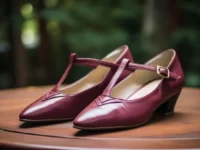Cardiac arrests cause about 50,000 deaths in France every year. That's about 100 deaths per day. According to the latest statistics, nearly 70 % of these accidents happen at home, while the rest occur either in public places or on the public highway. This is why it is important to have the right reflexes when faced with such a complication.
Call for help and check
It should be noted that the survival of a person in cardiopulmonary arrest often depends on the first reactions of those around them at that time. Thus, the first thing to do in such a situation is to call for help. To do this, simply dial 15 for the emergency services or 18 for the fire department. You must also tell the person you are calling that it is a cardiac arrest.
Then, while waiting for help to arrive, check the patient's breathing and at the same time clear his airway. First, have the patient lie on his or her back on a hard surface.
Kneel down and place one hand on the person's forehead. You will then lift their chin with your other hand before gently tilting their head back. In this way, you can observe and listen to whether or not they are breathing. At the same time, check for foreign objects in her mouth that may be interfering with her breathing. If she is wearing dentures, remove them immediately.
Insufflation and cardiac massage
You can then perform a few rounds of insufflation. Depending on the patient, it is possible to perform mouth-to-nose, mouth-to-mouth or mask ventilation. In the case of an adult patient, you must give mouth-to-mouth ventilation using a mouth-to-mouth mask.
The first thing to do is pinch the person's nose and cover their mouth with yours. Then, blow slowly into their mouth. Take a deep breath and repeat several times. Note that when you blow, the patient's chest should rise.
Then check for breathing. If he or she is not breathing, perform CPR immediately. Place your hands, one above the other, between the patient's breasts, i.e. in the middle of the chest. Make sure that your arms are straight.
Then push quickly towards the front for 4 centimeters before letting your hands go up. Continue by alternating 2 breaths and 30 cardiac massages. As soon as the person regains consciousness, breathes or speaks, you can stop the cardiac massage. Simply lay the person on their side until help arrives.
Use of the defibrillator
When a person suffers a sudden cardiac arrest, it is possible to restart the heart by using an automatic defibrillator. Moreover, this device is starting to be available everywhere, namely in public places, planes, trains, etc. The purpose of using this device is to detect fibrillation, or more simply an anarchic contraction of the heart. Its use is quite simple.
First, you open the defibrillator and follow the vocal instructions. Next, you will stick the electrodes on the subject, i.e. one under the left breast and one under the collarbone. It is now time to connect the cable. When the cable is connected, the device indicates that it is performing a heart rhythm analysis of the patient and that the patient should not be touched.
After this analysis of a few seconds, you have the choice between two options. Either the recommended shock where the device shocks or proposes to shock. You just have to press the flashing button. You must never touch the victim. Or non-recommended shock where you will resume the cardiac massage.



